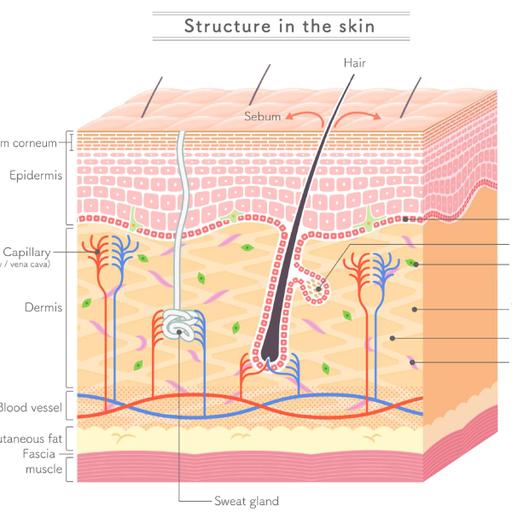Structure of Skin
Presentations | English
The skin is the largest organ. It covers the whole body and is water-resistant. The skin consists of two layers; the Epidermis and Dermis (under which lies the subcutaneous or fatty layer). The epidermis is the layer of skin that we can see. It varies in thickness. The thickest layer is on the soles of the feet and the palms of the hands. The thinnest layer is on the eyelids and nipples. The cells on the surface are constantly coming off (shedding) this is known as desquamation. They are also constantly being replaced from below as cells from the basal layer of the epidermis multiply and are pushed up to the surface. The human skin is the outer covering of the body and is the largest organ of the integumentary system. The skin has up to seven layers of ectodermal tissue and guards the underlying muscles, bones, ligaments and internal organs. Human skin is similar to most of the other mammals’ skin, and it is very similar to pig skin. Though nearly all human skin is covered with hair follicles, it can appear hairless.

18.50
Lumens
PPTX (37 Slides)
Structure of Skin
Presentations | English
